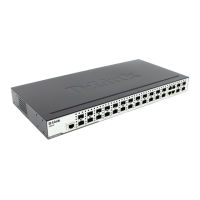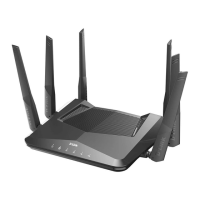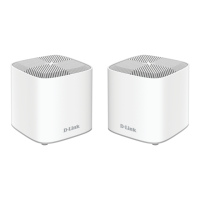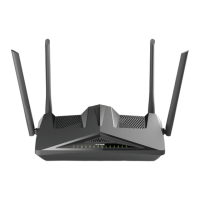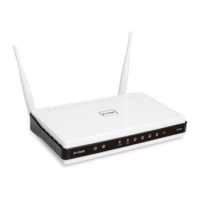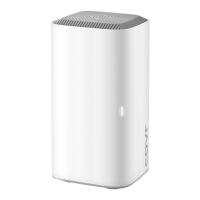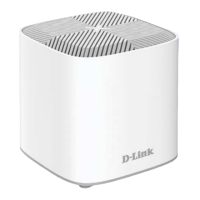xStack® DES-3200 Series Layer 2 Managed Fast Ethernet Switch
228
Enabled –When this field is toggled to Enabled, the relay agent will insert and
remove DHCP relay information (option 82 field) in messages between DHCP
servers and clients. When the relay agent receives the DHCP request, it adds the
option 82 information, and the IP address of the relay agent (if the relay agent is
configured), to the packet. Once the option 82 information has been added to the
packet it is sent on to the DHCP server. When the DHCP server receives the
packet, if the server is capable of option 82, it can implement policies like restricting
the number of IP addresses that can be assigned to a single remote ID or circuit ID.
Then the DHCP server echoes the option 82 field in the DHCP reply. The DHCP
server unicasts the reply back to the relay agent if the request was relayed to the
server by the relay agent. The switch verifies that it originally inserted the option 82
data. Finally, the relay agent removes the option 82 field and forwards the packet to
the switch port that connects to the DHCP client that sent the DHCP request.
Disabled- When the field is toggled to Disabled, the relay agent will not insert and
remove DHCP relay information (option 82 field) in messages between DHCP
servers and clients, and the check and policy settings will have no effect.
DHCP Relay Agent
Information Option 82
Check
Use the drop-down menu to enable or disable the Switches ability to check the
validity of the packet’s option 82 field.
Enabled – When the field is toggled to Enabled, the relay agent will check the
validity of the packet’s option 82 field. If the switch receives a packet that contains
the option 82 field from a DHCP client, the switch drops the packet because it is
invalid. In packets received from DHCP servers, the relay agent will drop invalid
messages.
Disabled – When the field is toggled to Disabled, the relay agent will not check the
validity of the packet’s option 82 field.
DHCP Relay Agent
Information Option 82
Policy
Use the drop-down menu to set the Switches policy for handling packets when the
DHCP Relay Agent Information Option 82 Check is set to
Disabled. The default is Replace.
Replace – The option 82 field will be replaced if the option 82 field already exists in
the packet received from the DHCP client.
Drop – The packet will be dropped if the option 82 field already exists in the packet
received from the DHCP client.
Keep – The option 82 field will be retained if the option 82 field already exists in the
packet received from the DHCP client.
DHCP Relay Agent
Information Option 82
Enter the DHCP Relay Agent Information Option 82 Remote ID.
DHCP Relay Agent
Information Option 82
Enter the DHCP Relay Agent Information Option 82 Circuit ID.
DHCP Relay Option 60
State
Use the drop-down menu to enable or disable the use of the DHCP Relay Option
60 State feature. If the packet does not have option 60 enabled, then the relay
servers cannot be determined based on the option 60. In this case the relay servers
will be determined based on either option 61 or per IPIF configured servers. If the
relay servers are determined based on option 60 or option 61, then per IPIF
configured servers will be ignored. If the relay servers are not determined by either
option 60 or option 61, then per IPIF configured servers will be used to determine
the relay servers.
enable – Select this option to enable the DHCP Relay Option 60 state, in order to
relay DHCP packets.
disable - Select this option to disable the DHCP Relay Option 60 state.
DHCP Relay Option 61
State
Use the drop-down menu to enable or disable the use of the DHCP Relay Option
61 State feature. When option 61 is enabled, if the packet does not have option 61,
then the relay servers cannot be determined based on option 61. If the relay
servers are determined based on option 60 or option 61, then per IPIF configured
servers will be ignored. If the relay servers are not determined either by option 60
or option 61, then per IPIF configured servers will be used to determine the relay
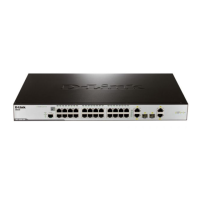
